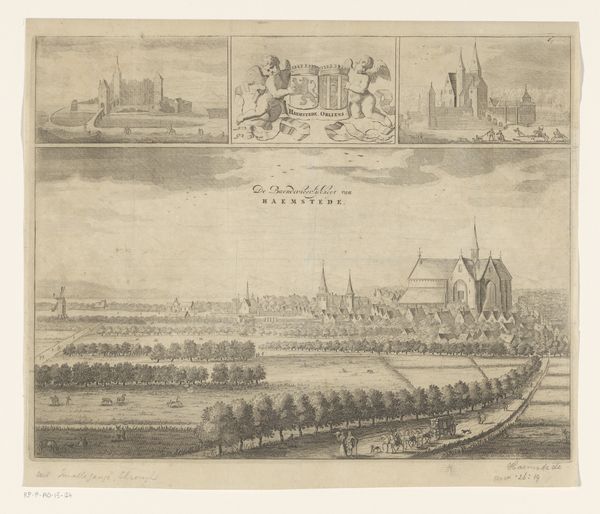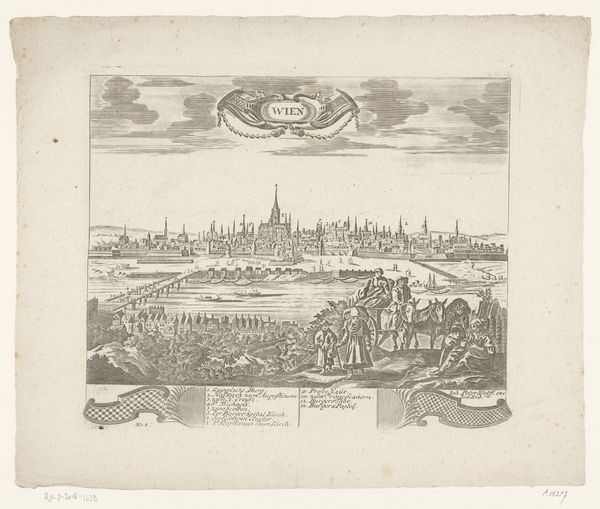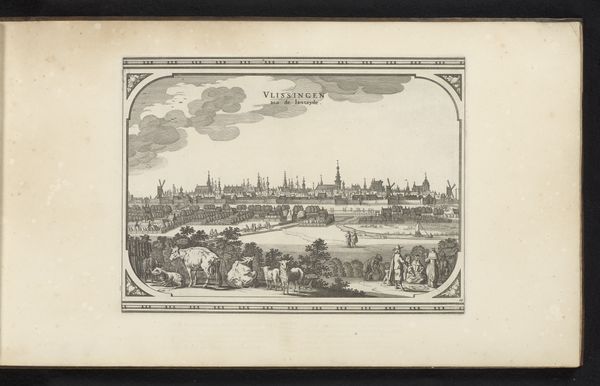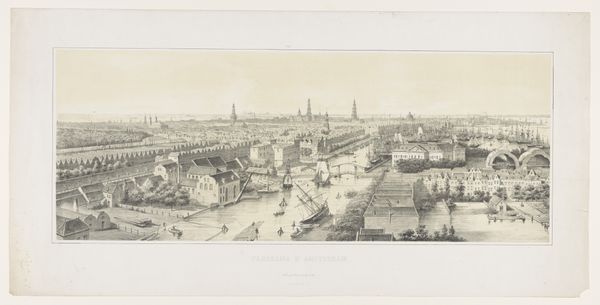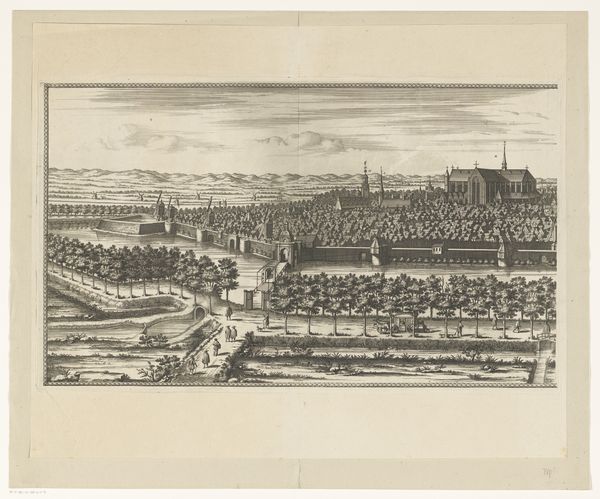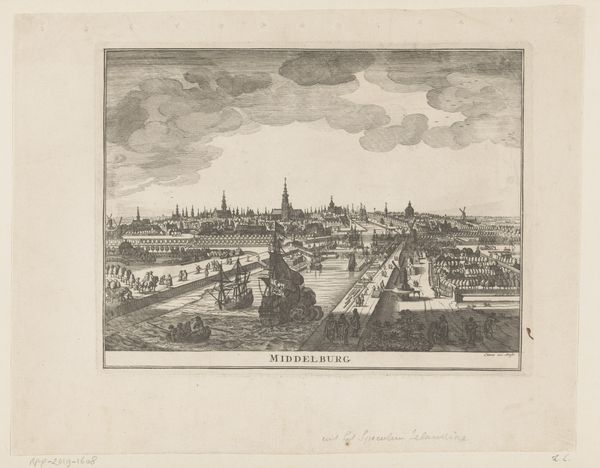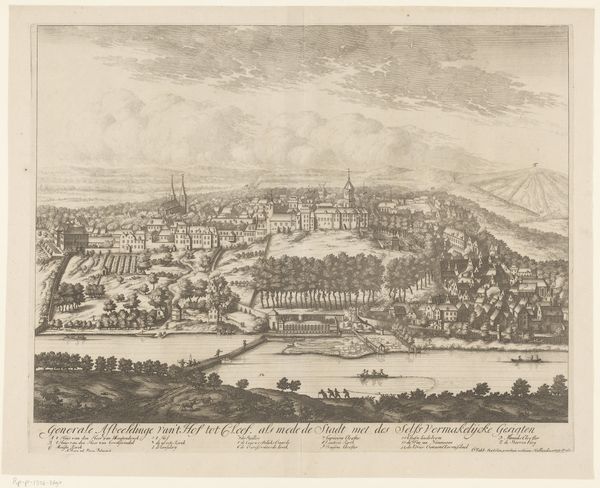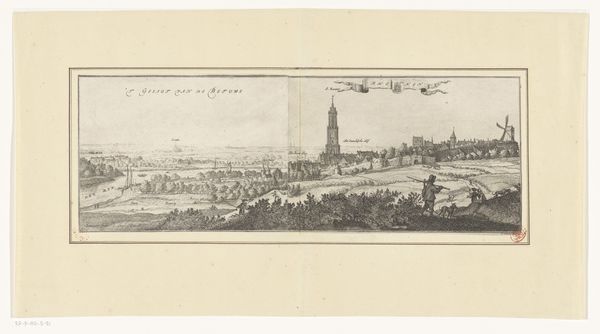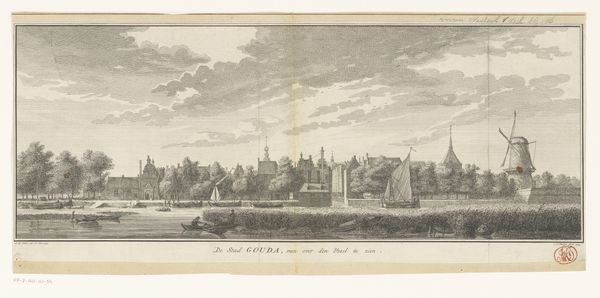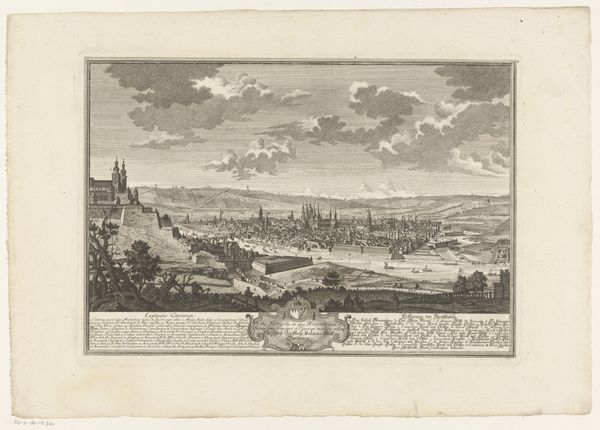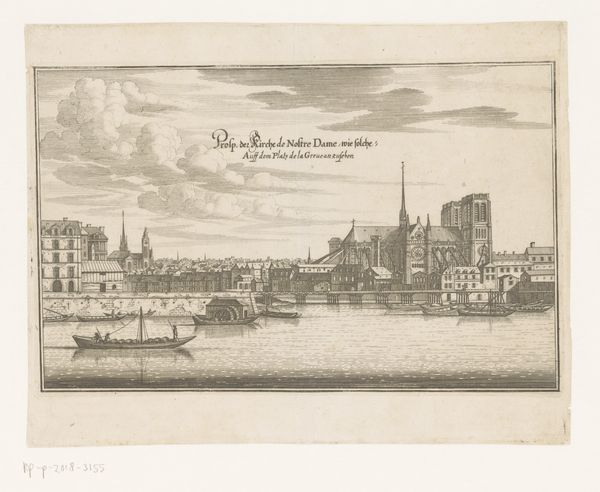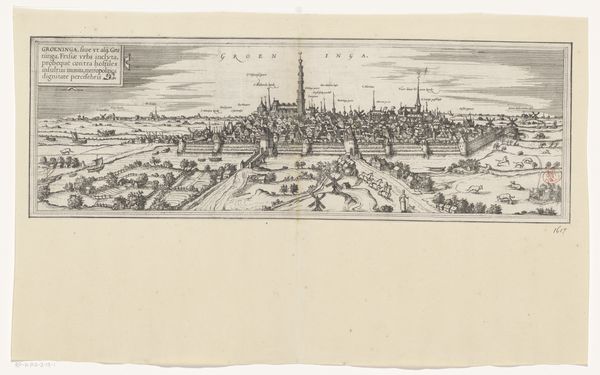
print, engraving
#
medieval
#
dutch-golden-age
# print
#
landscape
#
cityscape
#
engraving
Dimensions: height 355 mm, width 619 mm
Copyright: Rijks Museum: Open Domain
Curator: This print, "Rand van de Grote Hagen," meaning "Edge of the Great Hedge," comes to us from 1675. Its creator, Christiaan Hagen, offers an engraved perspective of what was surely a bustling Dutch city. Editor: My first thought is… intricate! The detail is just mesmerizing. All those tiny houses huddled together, those spindly trees... It feels a bit like looking into a dollhouse world, a meticulous miniature of real life. Curator: Indeed. Hagen's work provides a glimpse into the urban planning of the Dutch Golden Age. The fortified walls, the strategically placed windmills... These were essential elements in ensuring the prosperity and safety of the city's inhabitants. It reminds us how vulnerable cities once were, how deliberately planned they needed to be for defense as much as commerce. Editor: Right, those walls do give a sense of enclosure. But there's something serene, too. The artist captures a sense of order, of a place thriving within its boundaries. Even the carefully spaced trees contribute to this feeling of cultivated peace. I imagine the inhabitants feeling both protected and proud of their well-ordered world. Curator: That order, as you note, was no accident. Dutch cityscapes, even in print, became statements of civic pride. Works like this were often commissioned to project an image of strength, progress, and wealth, solidifying a city's place within the broader Dutch identity. This was visual propaganda of a subtle kind. Editor: Propaganda maybe, but I also feel like it shows us how humans reshape their environment—a little bit intimidating, a little bit thrilling. Look at how much nature is pushed back or reshaped by all that order. Curator: I agree completely. It makes you wonder about the stories that went unrecorded: the cost of such “progress”, who benefits, who doesn’t, from these fortifications, who built them, and under what conditions... Editor: It’s humbling, isn’t it, to stand here and think of how much unseen labor, of unseen decisions, went into the reality shown in this single image. Curator: Exactly, and now, perhaps, you won't simply see it as an aesthetically pleasing print, but a glimpse into the socio-political context of 17th-century Netherlands. Editor: Not at all. Now it feels less like a simple landscape and more like an active, crowded, maybe even a contested space, carefully composed for us to interpret centuries later.
Comments
No comments
Be the first to comment and join the conversation on the ultimate creative platform.
